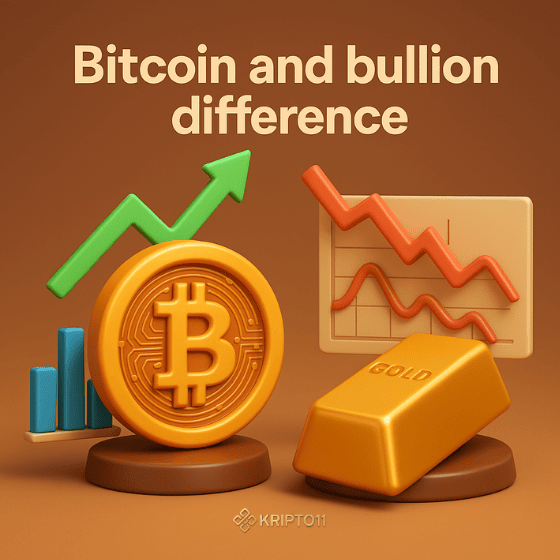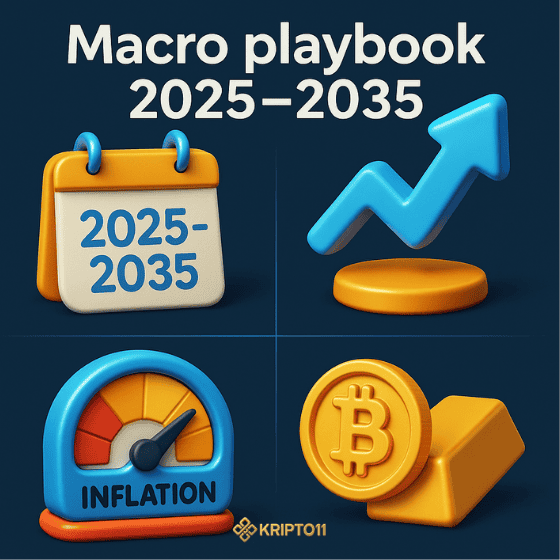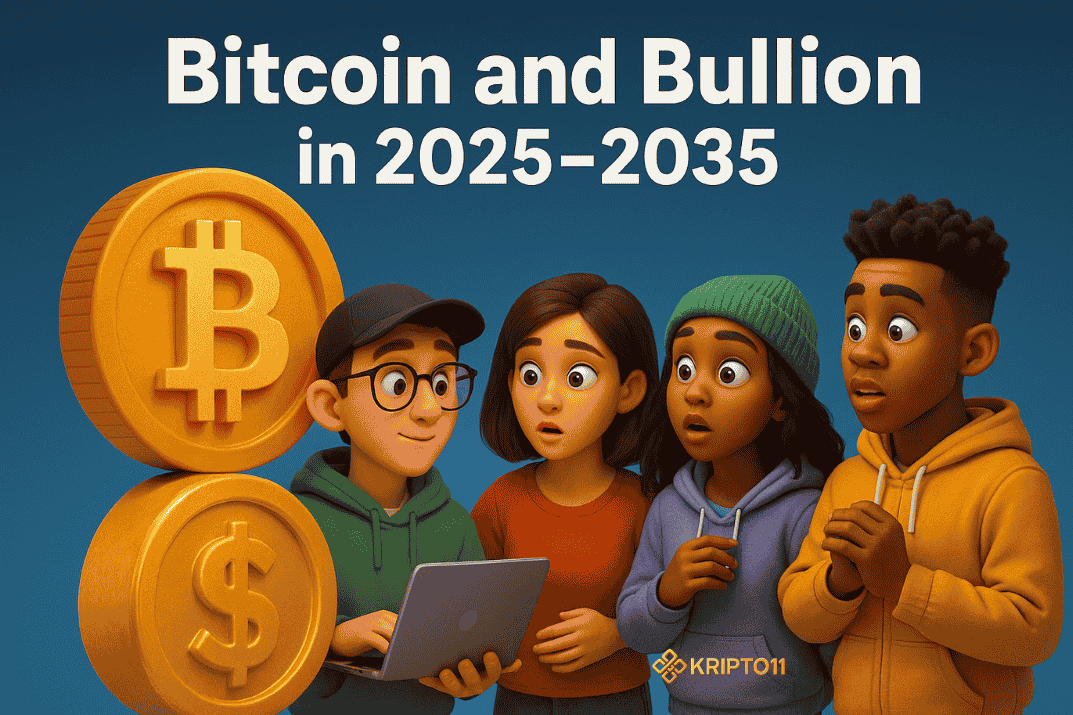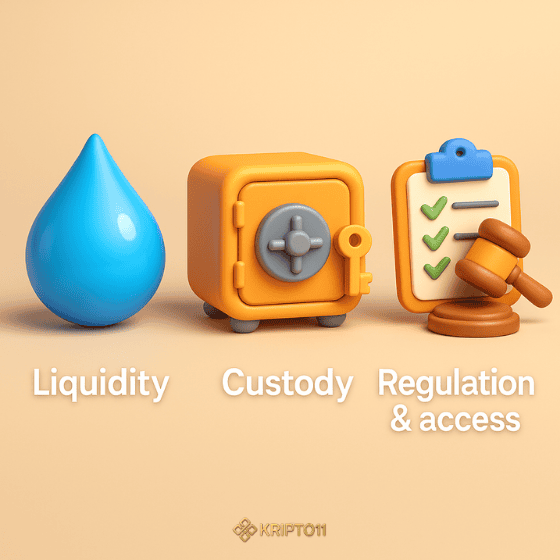Inflation doesn’t play fair. It compounds quietly, reshapes budgets, and tests portfolios. Over the next decade, two hedges will dominate water-cooler debates: Bitcoin and Bullion. One is programmable “digital gold” with hard-coded scarcity; the other is millennia-tested physical gold that shines when trust erodes. This guide cuts through hype to compare their mechanics, use cases, and risk controls-so you can position confidently for 2025-2035.
Bitcoin and bullion difference: mechanics, value drivers, and market behavior
At a glance, the Bitcoin and bullion difference is about how each preserves purchasing power. Both target inflation hedging, but the Bitcoin and bullion difference shows up in issuance rules, liquidity, and stress behavior:
- Scarcity architecture: Bitcoin’s hard-cap, programmatic issuance vs. gold’s mined and recycled supply.
- Market microstructure: 24/7 digital venues with instant settlement vs. spot/futures/OTC with variable premiums.
- Utility & portability: Borderless, programmable transfers vs. tangible, universally recognized metal.
- Crisis dynamics: Bitcoin can correlate with risk short-term; gold often leads as a classic safe haven.

Bottom line: The Bitcoin and bullion difference is code-enforced scarcity and digital rails versus material permanence and centuries of trust.
Scarcity architecture
- Bitcoin: programmatic issuance with a fixed cap of 21M-transparent and verifiable on-chain.
- Bullion: supply grows via mining and recycling-constrained, but flexible over time.
Market microstructure
- Bitcoin trades 24/7 on global venues with instant finality; spreads compress in liquid pairs.
- Gold trades through spot, futures, and OTC bullion banks; settlement and premiums vary by product.
Utility & portability
- Bitcoin moves across borders in minutes; it enables programmable finance, self-custody, and micropayments.
- Gold stores value without code or electricity; it’s tangible, bearer-style, and universally recognized.
Behavior in stress
- Bitcoin often correlates with risk assets on short horizons, yet it decouples in idiosyncratic crypto cycles.
- Gold tends to shine during geopolitical shocks, rate cuts, or deflationary scares.
Bottom line: the Bitcoin and bullion difference rests on how each hedge earns trust-code-enforced scarcity vs material permanence and where each excels: digital rails vs physical sovereignty.
Macro playbook 2025-2035: regimes, rates, and real yields

- Inflation hedges respond to real yields and policy pivots: Sticky inflation, negative real yields / Winners: Bitcoin and Bullion both benefit as cash bleeds purchasing power.
- Edge: Bitcoin’s fixed cap narrative amplifies in debasement cycles; gold’s institutional bid provides ballast. Disinflation with growth scares / Gold often outperforms as a classic safe-haven asset; Bitcoin may chop with risk markets, then base.
- Productivity boom, mildly positive real yields : Rotations into equities can dull hedge demand. Dollar-cost averaging into both hedges preserves optionality.
- Geopolitical shocks and liquidity crunches / Gold tends to get the first call from central banks and allocators. Bitcoin can rebound faster post-shock if liquidity returns to risk assets.
Tactical note: Blend regime signals (real rates, USD trend, policy guidance) with position sizing. When uncertainty spikes, raise the safe-haven premium bucket.
Scarcity, issuance, and security: why the cap vs the metal matters
Bitcoin’s hard cap & halving
Issuance declines on a predictable schedule. Each halving compresses new supply, often reshaping the demand/supply balance.
Security: Proof-of-work mining ties network integrity to real-world energy costs, disincentivizing attacks.
Gold’s geological scarcity & cost curves
New supply depends on ore grades, capital cycles, and energy input. The all-in sustaining cost acts as a soft floor.
What investors should internalize
- Bitcoin’s scarcity is deterministic; gold’s scarcity is economic.
- Over long arcs, both generate a scarcity premium, but through distinct constraints—protocol rules vs natural limits.
Liquidity, custody, and regulation: practicalities that make or break returns
Liquidity
- Bitcoin: deep 24/7 liquidity in major pairs; on-chain settlement enables permissionless transfer.
- Bullion: strong institutional depth via futures/OTC; retail access varies by ETFs, coins, bars, and increasingly tokenized gold.
Custody
Bitcoin:
- Self-custody with hardware wallets or multisig gives sovereignty.
- Custodial solutions reduce friction but add counterparty risk.
Gold:
- Allocated vaulting with serial-numbered bars for direct title.
- Unallocated accounts add credit exposure but improve liquidity and fees.
- Tokenized gold off offers digital transferability backed by vaulted metal-verify audits and redemption terms.
Regulation & access
- Gold products are widely standardized; KYC/AML applies to large purchases and redemptions.
- Jurisdictions differ on crypto taxation, reporting, and ETF approvals.
Implementation tip: Match product to purpose. For long-horizon store-of-value, favor low-leakage custody (multisig or allocated). For tactical trades, use liquid wrappers (spot ETFs, futures) to minimize slippage.
Portfolio construction: sizing, rebalancing, and risk controls
1) Core-satellite blueprint
- Core (defensive): 5–10% Bullion via allocated vaulting or low-fee ETFs for baseline safe-haven exposure.
- Core (convexity): 3–8% Bitcoin for asymmetric upside tied to adoption and digital scarcity.
- Satellite (tactical): add or trim 1–3% bands using volatility targeting and macro signals.
2) Rebalancing cadence
- Quarterly light-touch works for most investors; use 5–10% drift bands.
- During high volatility, switch to rules-based triggers (e.g., 1.5× realized vol change).
3) Drawdown defense
- Cap single-asset max drawdown with stop-loss or options overlays (protective puts on BTC or GLD/GC futures).
- Keep a cash buffer for opportunities; dry powder turns volatility into entries.
4) Entry method
- Favor dollar-cost averaging to reduce timing risk.
- For lump sums, split into stages: initial 40%, then 30%/30% at pre-set levels or time intervals.
5) Correlation awareness
Stress-test portfolios under both risk-on surges and flight-to-quality events; expect correlation regimes to shift.
Quick template (example-not advice):
- 6% Bullion (allocated or low-fee ETF)
- 5% Bitcoin (self-custody or regulated spot ETF)
- Rebalance quarterly; add on real-yield dips or policy easing.
FAQ : Bitcoin and Bullion in 2025-2035
Q1: What’s the clearest Bitcoin and bullion difference for 2025-2035?
A: Bitcoin is digital gold with a fixed supply and instant, borderless transfer. Bullion is physical gold with time-tested safe-haven status, vaulted custody, and broad institutional adoption.
Q2: Which hedge reacts faster to monetary debasement?
A: Bitcoin often reprices quicker due to 24/7 markets and narratives around hard-cap scarcity. Gold usually follows with steadier, institution-led flows.
Q3: How can I hold each asset with strong custody?
A: For Bitcoin, use hardware wallets, multisig, or reputable custodians. For Bullion, use allocated vaulting with bar-level audits; consider tokenized gold only if redemption, audits, and jurisdiction are crystal-clear.
Q4: I worry about volatility-how should I size positions?
A: Use small core allocations (e.g., 3–10% each), add via dollar-cost averaging, and apply volatility targeting or options overlays to keep drawdowns tolerable.
Q5: Is tokenized gold a good middle ground?
A: It can blend physical backing with digital transferability. However, check issuers’ audit frequency, legal claims on metal, redemption fees, and chain risk.
Q6: What about taxation and reporting?
A: Rules vary by country. Some treat crypto as property and gold as collectibles or investments. Track cost basis meticulously and consult local guidance.
Q7: Could real yields staying positive hurt both hedges?
A: Yes, but effects differ. Gold may tread water; Bitcoin might rely more on adoption and network effects. A barbell strategy cushions either outcome.
Q8: Do I need both Bitcoin and Bullion?
A: Many investors hold both. Gold provides safe-haven ballast; Bitcoin supplies convex upside. Together, they diversify inflation-hedge risk.



